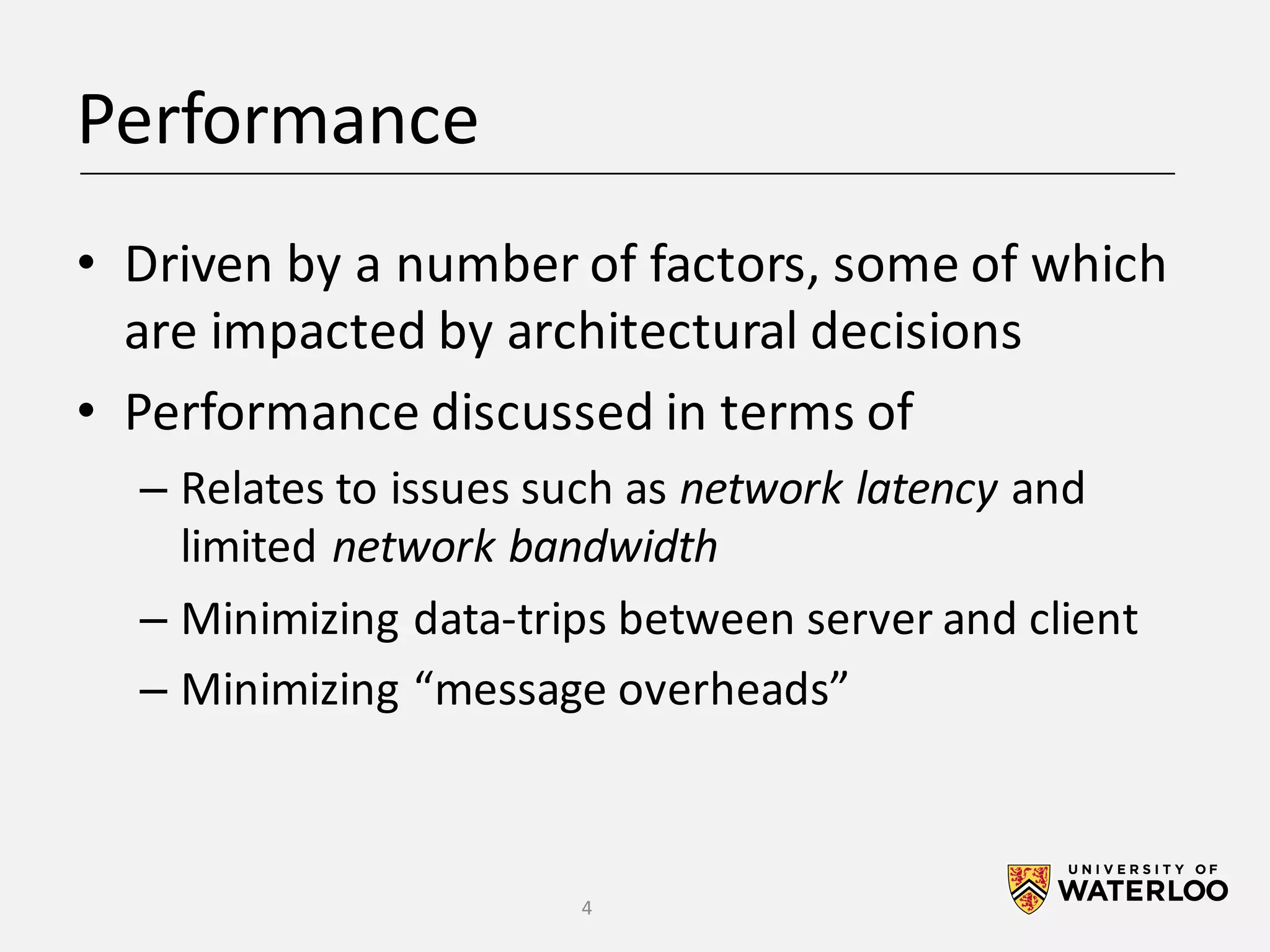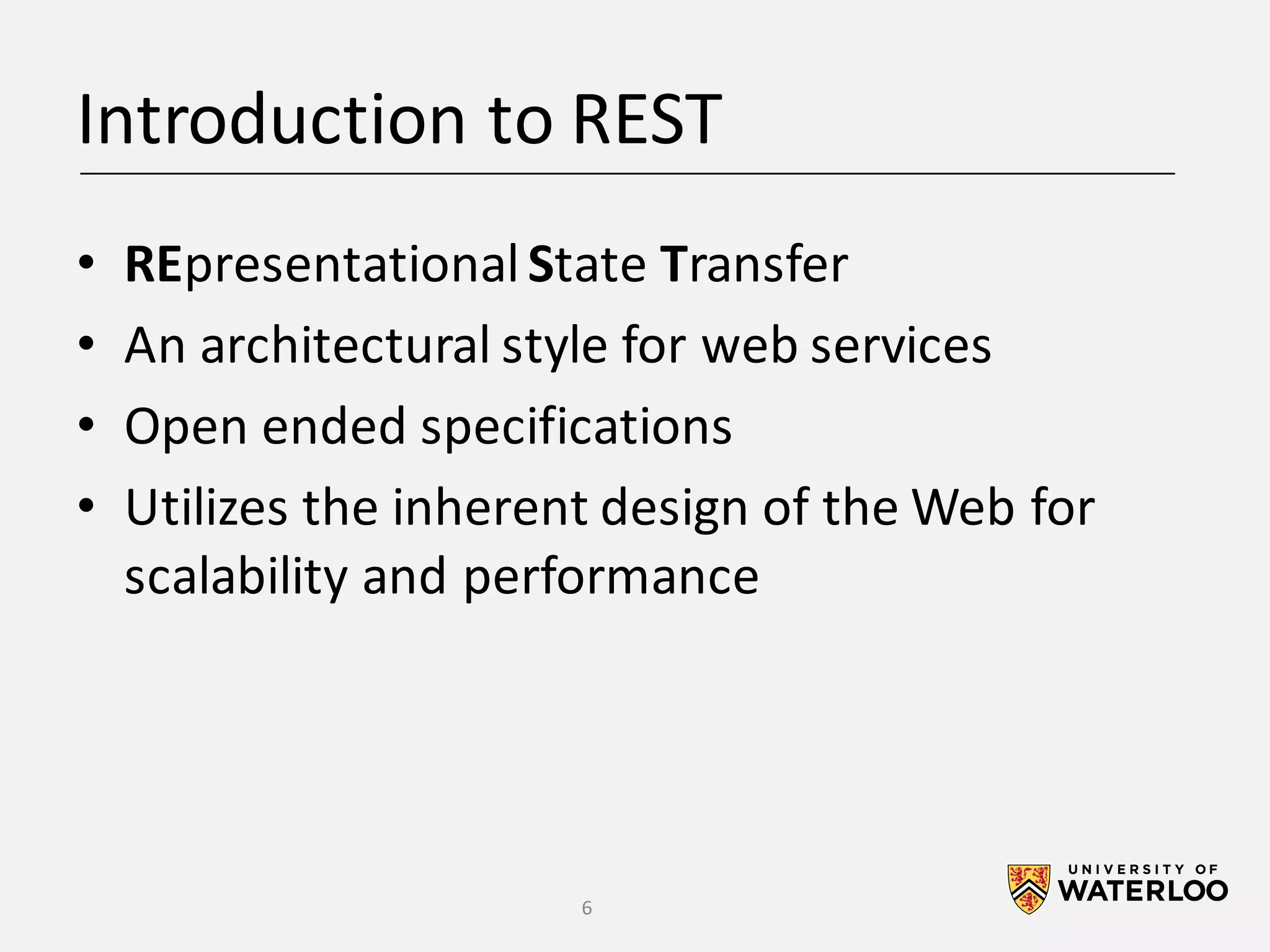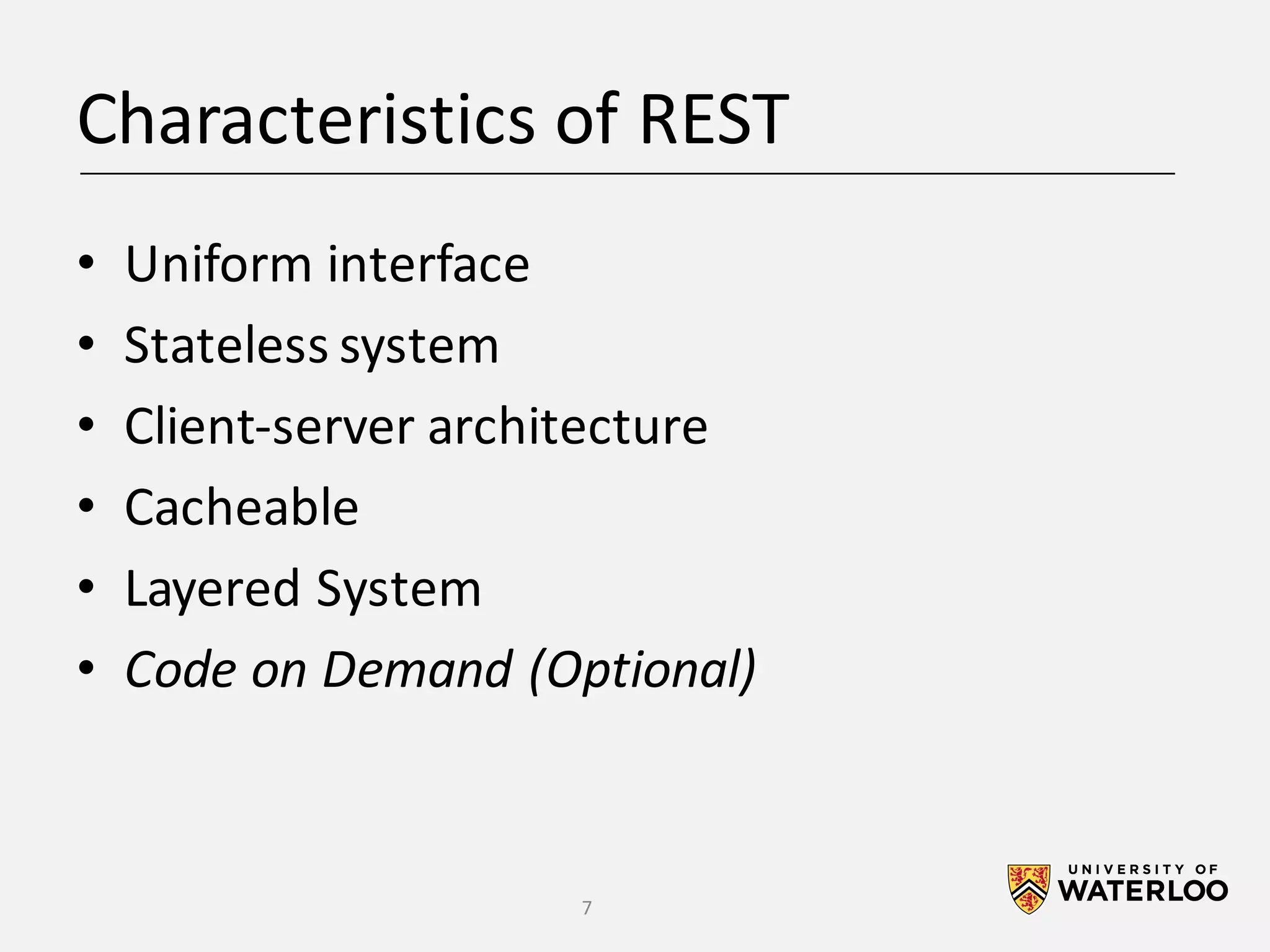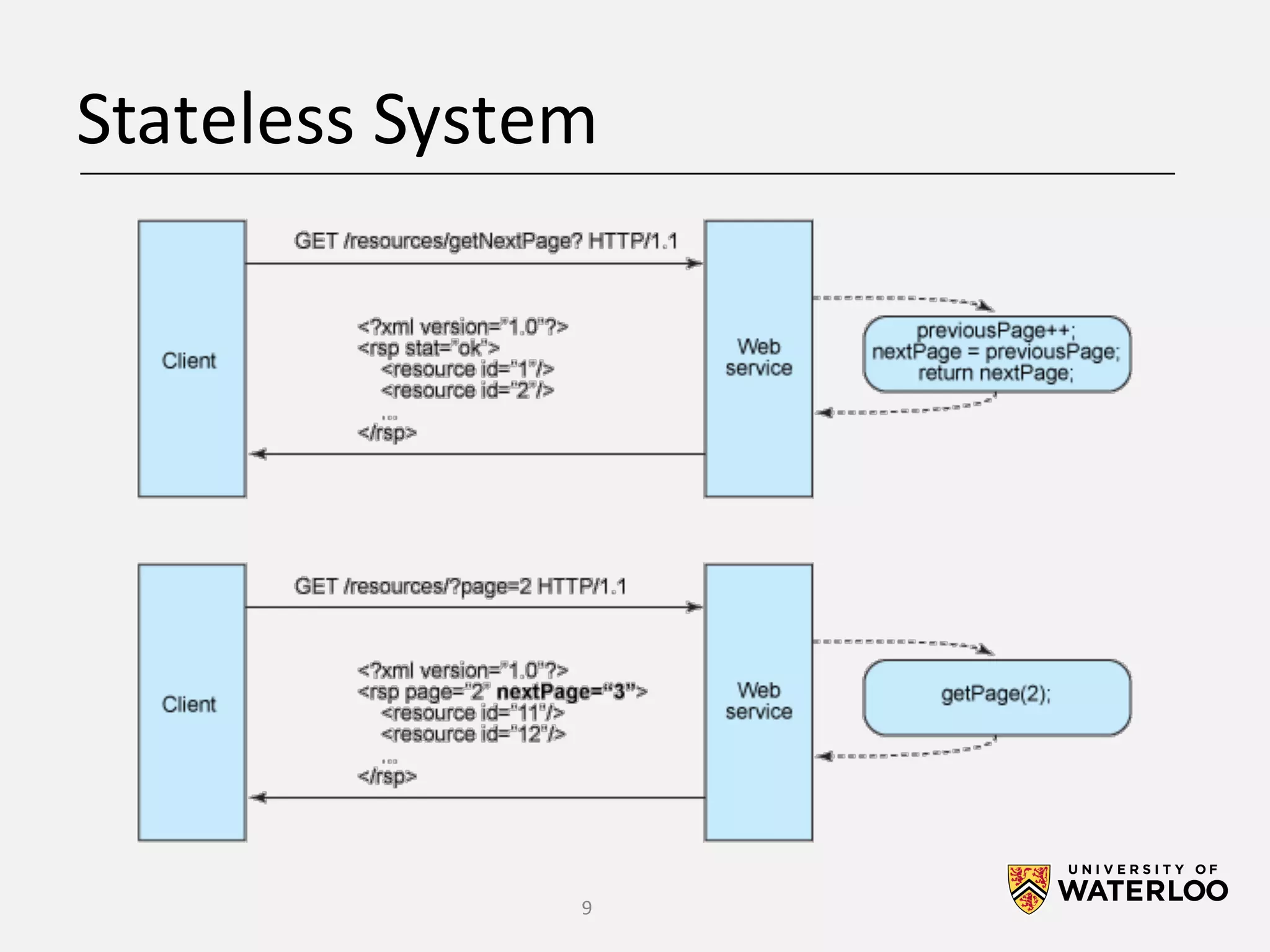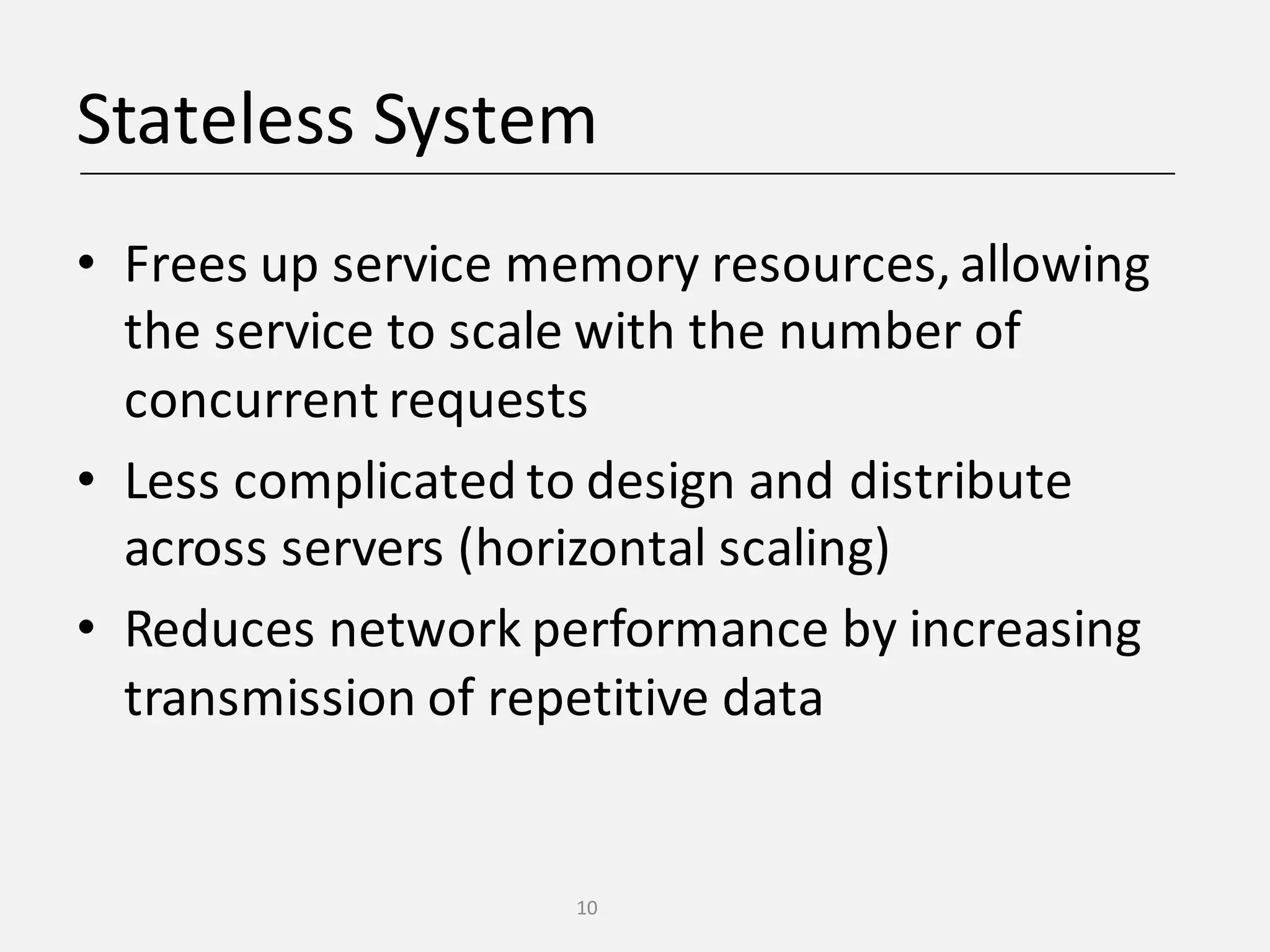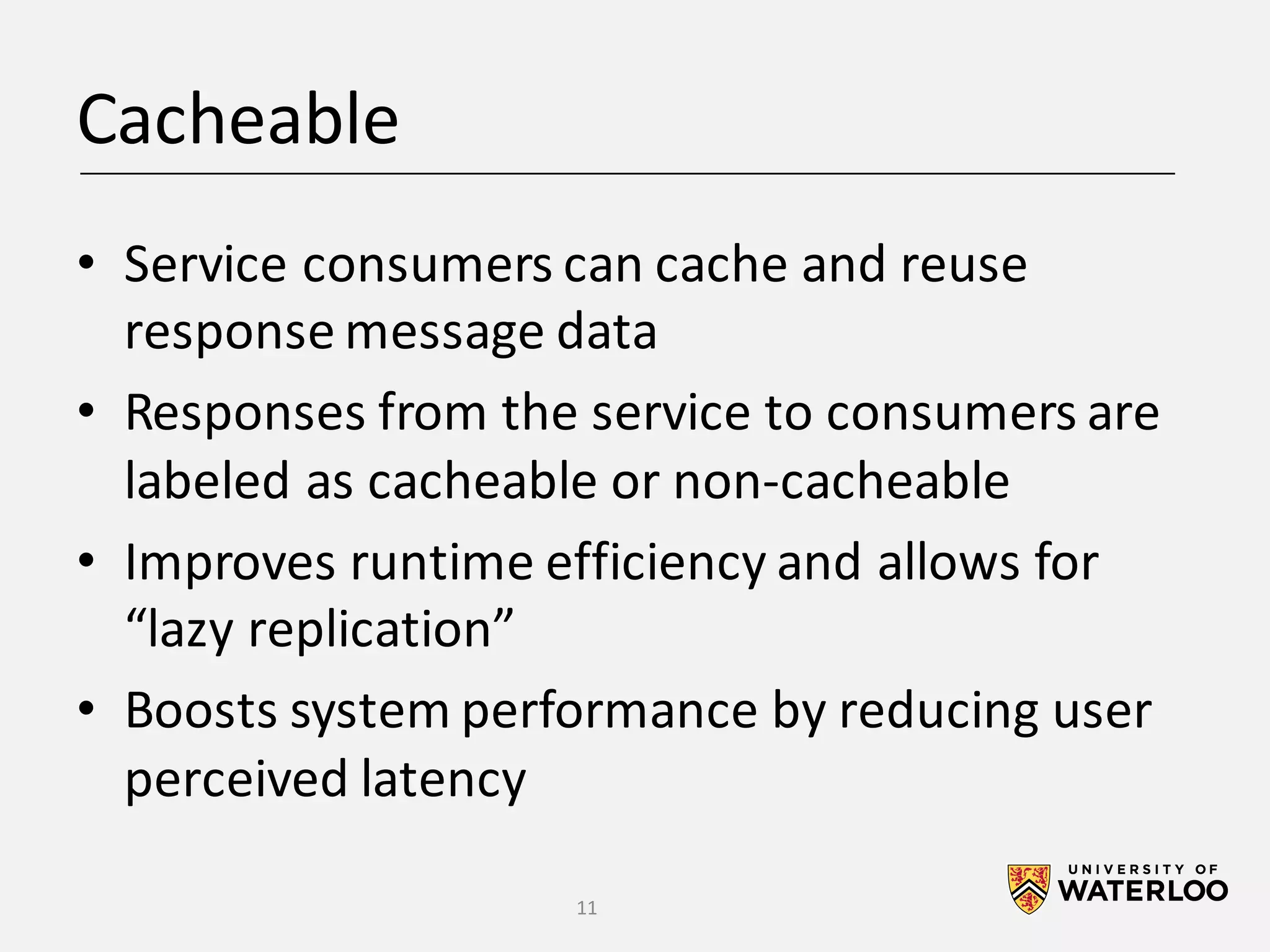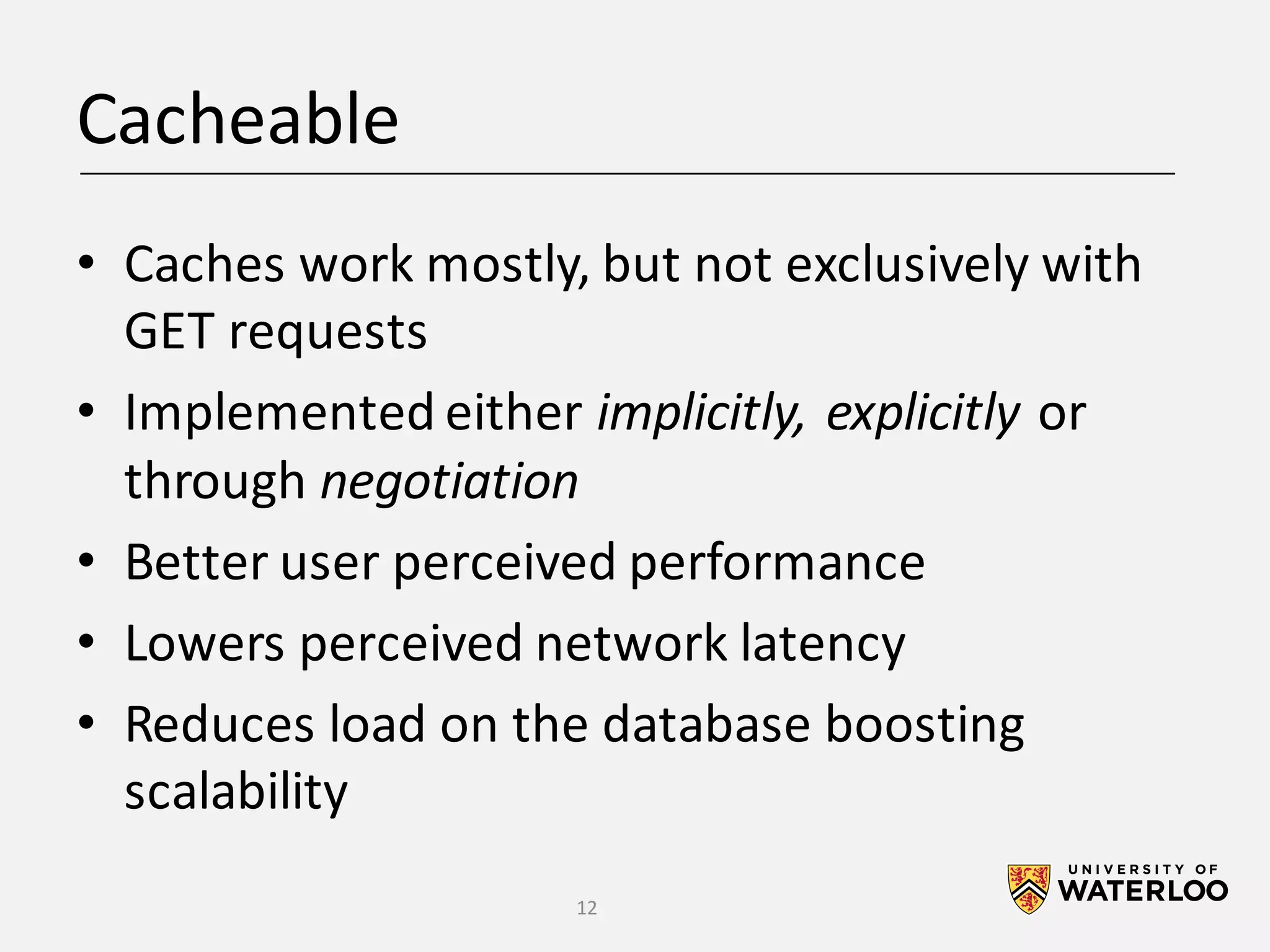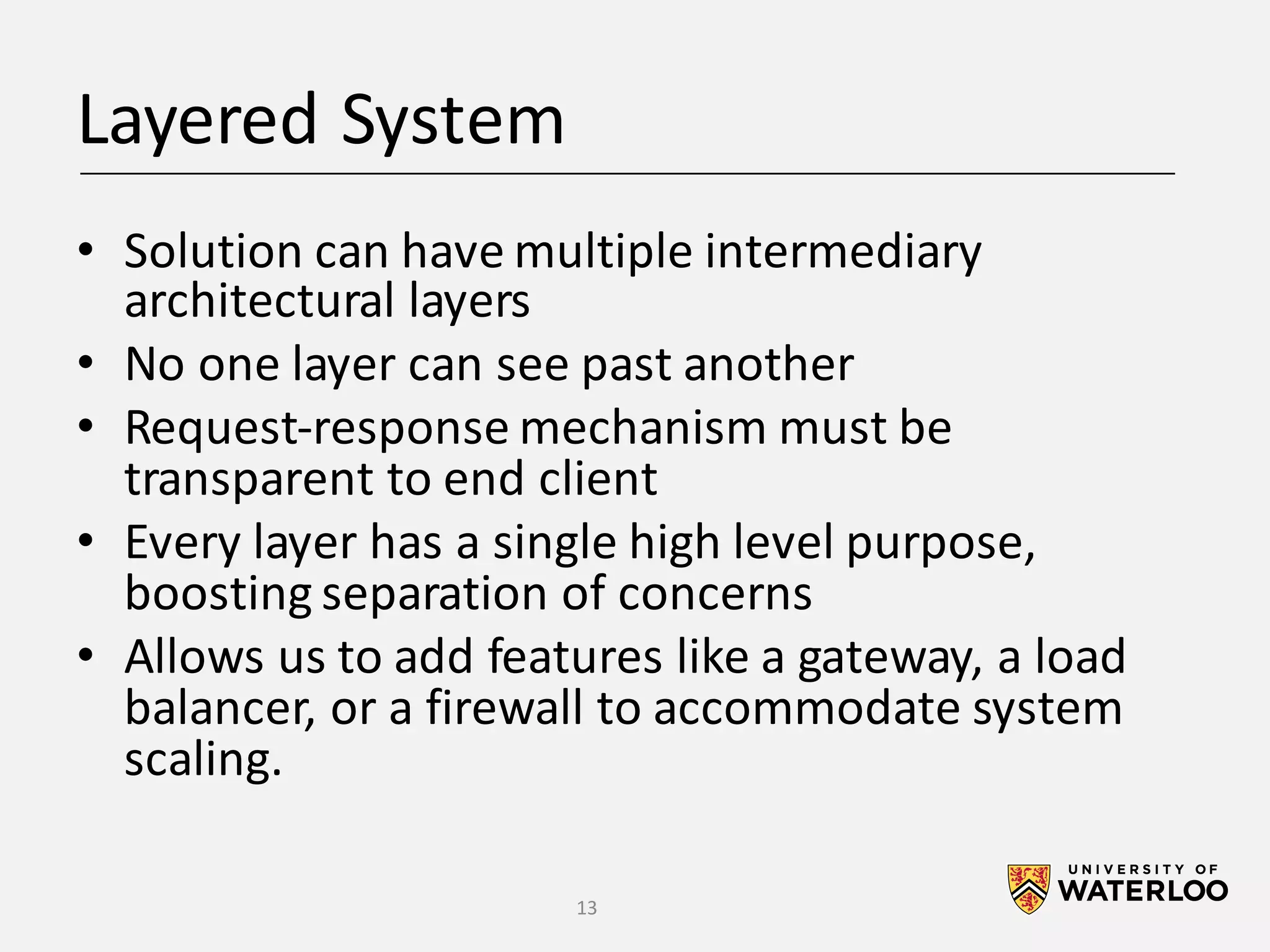The document discusses the impact of RESTful web architecture on performance and scalability, highlighting key concepts such as web services, statelessness, and caching. It explains how REST's characteristics can aid in managing large numbers of concurrent requests and enhancing system performance. The conclusion analyzes REST principles, noting their varying effects on performance and scalability.



